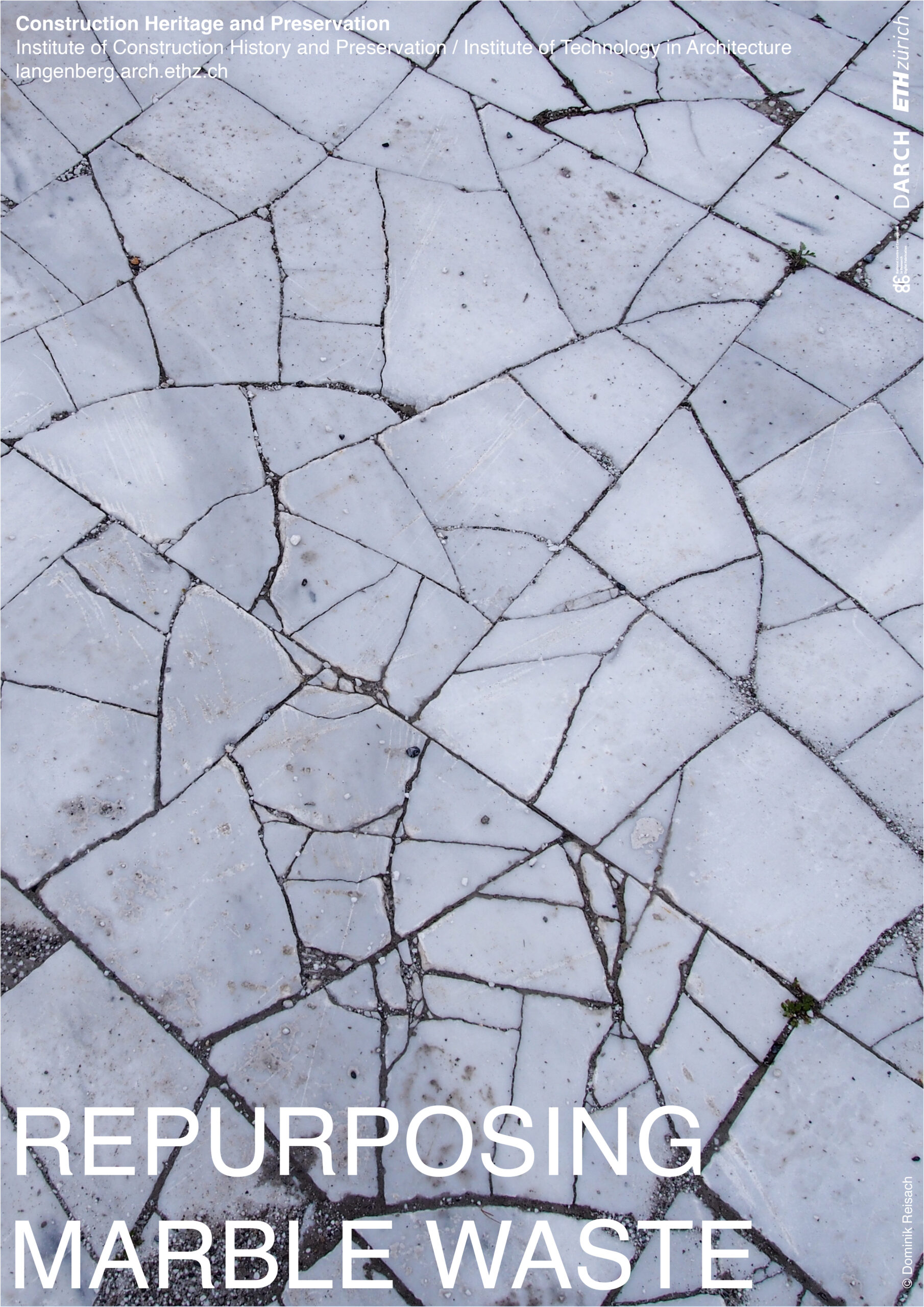
Doctoral Candidate: Dominik Reisach
Co-Supervisor: Prof. Dr. Benjamin Dillenburger, Digital Building Technologies, ETH Zurich
This research explores methods for repurposing discarded materials from the marble quarrying and processing industry in Europe. A representative material with several varieties and distinct aesthetic qualities, marble has been employed in the construction of numerous artistically and culturally significant buildings and places since antiquity. However, the manufacturing of high-quality marble products generates a substantial amount of waste, including rocks, slabs, gravel, and fine powder. Despite the industry’s recent incentives to find novel use-cases, these so-called “waste” products are usually downcycled. In contrast to existing research that focuses on the dense packing of rock assemblies or the upcycling of fine powder, this project addresses the prospect of repurposing waste marble slabs. The primary objective is twofold: First, to counteract prevailing downcycling practices through developing a repairable construction system for horizontal and vertical finishes for these marble slabs; second, to forge a computational workflow harnessing the inherent qualities and properties of the material to realize these architectural finishes. This is achieved through iterative physical prototyping, providing the means for assessing and evaluating the proposed system’s aesthetics, structural integrity, repairability, and scalability. Additionally, this research focuses on the creation of computational tools that complement and streamline the design process for structures utilizing reclaimed marble slabs. These computational tools leverage the progress made in fields such as computer graphics, computer vision, and structural engineering, transferring and amalgamating relevant algorithms to forge a bespoke design system. In synergy, these systems facilitate the design and construction of full-scale demonstrators, leveraging established digital fabrication and assembly techniques to showcase the feasibility and scalability of the proposed system. In the end, this research not only aims to contribute to the development of repairable architectural and construction technologies, but also contributes the discussion surrounding the integral role of sustainability and circularity as fundamental aspects of our future construction heritage.
